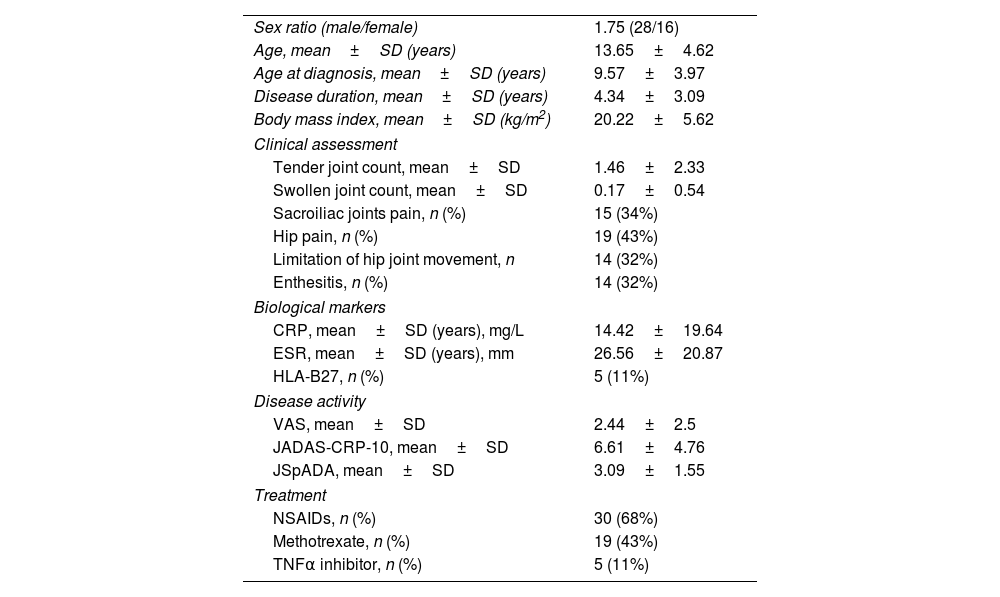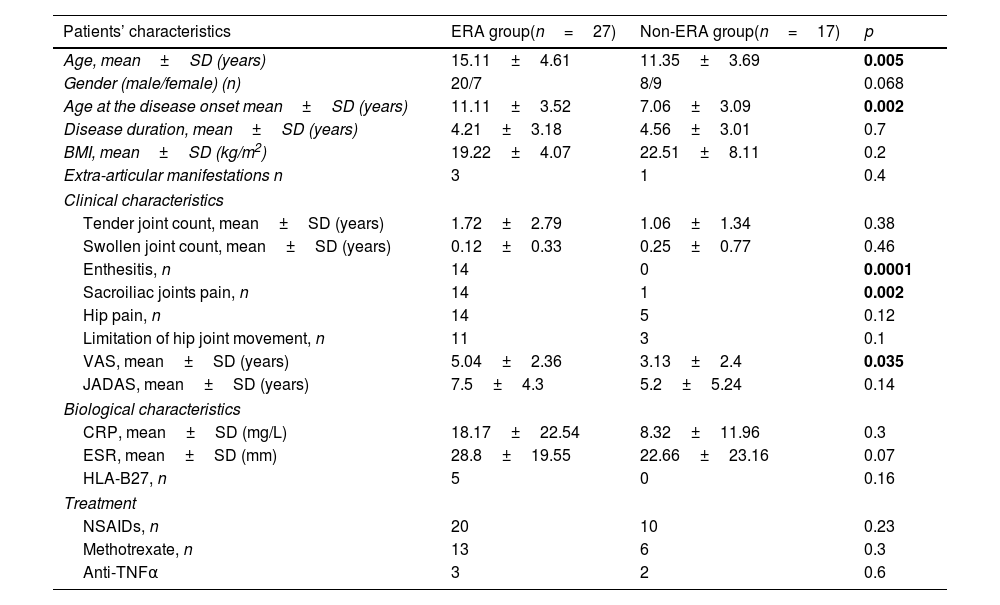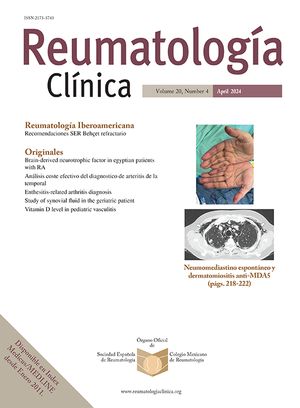Magnetic resonance imaging (MRI) sensitivity and specificity seem to be less studied in enthesitis-related arthritis (ERA).
We aimed to determine the ability of sacroiliac MRI to diagnose ERA patients.
Materials and methodsWe conducted a retrospective study including 44 patients with juvenile idiopathic arthritis (JIA). Each patient had a sacroiliac joint MRI. We divided patients into two groups: G1 patients with ERA and G2 patients with non-ERA subtype.
ResultsERA was noted in 61% of the cases. Sacroiliac joints were painful in 15 patients (34%). MRI was normal in 25 patients (57%) (G1:11 versus G2:14) and showed bone marrow edema in the sacroiliac joints in 19 patients (34%) (G1=16 versus G2=3, p=0.005).
Sacroiliac joints MRI's sensitivity and specificity in the ERA diagnosis were 61.54% and 82.35%, respectively. Positive and negative predictive values were 84.21% and 58.33%, respectively. Furthermore, sacroiliac joint pain in the clinical examination was able to predict sacroiliac bone edema in MRI with an odds ratio of 6.8 (95% CI 1.68–28.09; p=0.006).
ConclusionOur study showed that sacroiliac joint MRI has good specificity and positive predictive value in the diagnosis of ERA patients among JIA patients. This underlines the usefulness of sacroiliac joint MRI in the early diagnosis of ERA patients.
La sensibilidad y especificidad de la resonancia magnética parecen estar menos estudiadas en la artritis relacionada con entesitis (ERA).
Nuestro objetivo era determinar la capacidad de la resonancia magnética de la articulación sacroilíaca para diagnosticar pacientes con ERA.
Materiales y métodosRealizamos un estudio retrospectivo que incluyó a 44 pacientes con artritis idiopática juvenil (AIJ). A cada paciente se le realizó una resonancia magnética de la articulación sacroilíaca. Dividimos a los pacientes en dos grupos: G1: pacientes con ERA y G2: pacientes con subtipo no ERA.
ResultadosSe observó ERA en 61% de los casos. Las articulaciones sacroilíacas resultaron dolorosas en 15 pacientes (34%). La resonancia magnética fue normal en 25 pacientes (57%) (G1:11 vs. G2:14) y mostró edema de médula ósea en las articulaciones sacroilíacas en 19 pacientes (34%) (G1=16 vs. G2=3, p=0,005).
La sensibilidad y especificidad de la resonancia magnética de articulaciones sacroilíacas en el diagnóstico de ERA fueron de 61,54 y 82,35%, respectivamente. Los valores predictivos positivos y negativos fueron 84,21 y 58,33%, respectivamente. Además, el dolor en la articulación sacroilíaca en el examen clínico fue capaz de predecir el edema del hueso sacroilíaco en la resonancia magnética con un odds ratio de 6,8 (IC 95%: 1,68 a 28,09; p=0,006).
ConclusiónNuestro estudio demostró que la resonancia magnética de la articulación sacroilíaca tiene buena especificidad y valor predictivo positivo en el diagnóstico de pacientes con ERA entre pacientes con AIJ. Esto subraya la utilidad de la resonancia magnética de la articulación sacroilíaca en el diagnóstico temprano de pacientes con ERA.











